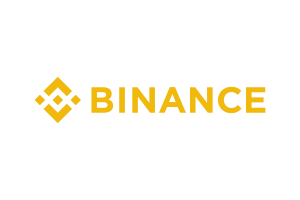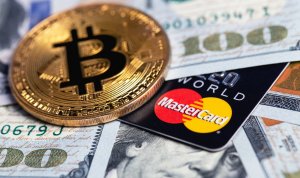The great trade execution debate
The evolution of the retail FX execution model has required a great level of understanding among retail brokerages with regard to how the liquidity is sourced and provided, right the way through the execution process, across all infrastructure from the trading server within a prime brokerage which has relationships with Tier 1 banks, through aggregated […]

The evolution of the retail FX execution model has required a great level of understanding among retail brokerages with regard to how the liquidity is sourced and provided, right the way through the execution process, across all infrastructure from the trading server within a prime brokerage which has relationships with Tier 1 banks, through aggregated liquidity provision, to the trading platform itself.
In order to take a close look at how best to operate the infrastructure within a retail brokerage, FinanceFeeds spoke to George Agathangelou, General Manager & Executive Director at FXGlobe in Limassol, Cyprus, who is a highly experienced expert in how to structure a retail FX brokerage.

Mr. Agathangelou covers the provision of liquidity, relationships with prime brokerages, and execution methods which range from agency (a-book) to b-book as well as connectivity to some of the large ECNs and how this should best be navigated in order to operate an efficient electronic trading company.
Of major importance to retail white label brands and brokerages is the cost of handling client order flow, which is as important as concentrating on cost per acquisition and marketing. What are liquidity providers and PBs missing when considering the cost per million or commission chargeable per lot that brokers have to keep in mind in order to remain profitable?
Liquidity providers and prime brokerages are business to business (B2B) vs business to client (B2C) where you would have a high cost of acquisition and low client value. When a LP is closing a deal it is usually long term and creates revenues on a monthly basis.
Prime brokerages and liquidity providers have a different business model altogether, where life expectancy of their clients is far longer. PB’s and LP’s don’t go for the mass marketing approach therefore the ratio of client revenues VS acquisition is much to their benefit.
Retail brokerage execution: What is the best method of execution for a retail STP Broker, and how should orders be executed considering market pricing, or bypassing the MT4 server and channeled to Currenex/CFH/Sucden etc. automatically according to the best liquidity available, with cost per million as the main deciding factor as to where to send for execution?
Dealing desk brokers (or Market Makers) decide which flow they would like to offset VS an STP broker that sends 100% of its flow and the cost of transaction greatly affects the company’s profitability while the cost of transactions include the spreads offered and the per mil charge.
MetaTrader 4 is more or less a monopoly today so there is no bypassing there for the retail unfortunately. However it is limited with its connectivity to other FX technologies like Currenex, and other ECN arenas and also requires a third party bridge.
So first, in order to choose the best execution venues you first need to understand this limitation. After you have mapped the technology solutions out there, pricing is the next factor, for example who is providing the best spreads?
Execution costs are both the market spreads and per million cost. The broker that is marking up as low as possible or offers no markup at all and charges the lowest per Million cost is the one you would want to prefer.
BUT, other factors than the terms of execution need to be considered also in depth. For example the execution quality, the depth of liquidity of the book of your ECN, the distance from your servers, as well as any other restriction regarding trade size, leverage, slippage.
A retail broker must be able to understand its flow. This is very important because making the wrong choice here will definitely increase the execution costs while the deal at first might look promising.
How would you recommend to set up a system that can channel orders to the most effective liquidity provider automatically, and what is the key criteria – is it cost of execution per lot/per million, or the price that the customer receives?
It will be easier to explain perhaps with an example:
Let’s assume that you are in the process of choosing between 2 liquidity provider solutions, A and B.
A is showing better spreads than B, but latency is 3 times higher than B, causing an average slippage of 0.2 pip.
B shows an average of 0.2 pip more than A but has no slippage at all. The chosen one will affect your marketing, your sales, your brokerage, while your effective cost of transaction is the same.
This is very subjective to the broker and its individual priorities. Today bridges have become much more sophisticated and enable aggregation of several LP’s into one enhanced aggregated price feed and aggregated execution. They try to imitate how real PB and ECN work but there are still a few factors to consider before we can say that we have a real ECN like environment.
What is your opinion on operating a dealing desk that runs a B-book only, but follows accurate market prices and gives accurate execution, emulating a live market but not exposing clients to potential negative balances due to volatility?
Avoiding negative balance to a market maker is a pure Marketing approach. Emulating live market execution is a technology that already exists and it is wise to operate like that if you want to give your traders the most objective unbiased environment, however sophisticated traders are aware of the conflicts of interest that arises when dealing with a market maker.
How do you structure a DMA execution model so that there is enough risk management software in place to be able to switch quickly to B-book in times of very high volatility which could cause spreads to widen or orders not to get filled, as well as to ensure that when spreads are narrow and volatility is low, enough profit can be made from broker commissions to sustain a retail business with clients of average deposit sizes of $3000 to $5000?
Basically it is the risk manager’s job to decide in which cases to offset the risk or to B-Book it, however for an STP broker like FXGlobe, everything becomes simpler as everything is offset to different Liquidity providers.
Based on the terms we are getting. We are offsetting clients to various venues in order to better service them and to maximize our revenues. As for the structure between A to B book, there are many bridges that can help you do that with a click of a button.
The real work here is to decide who, when and what to offset and this is the craftsmanship of the risk manager and its team.
Of course there are systems that can take this decision based on algorithms but from my experience they have not evolved enough to take everything under consideration so the human factor is very important in this aspect!
Would you consider using a dedicated FX exchange that puts broker and LP/PB on the same level and acts as a central execution point if such a thing existed with low exchange fees?
This means that there will be one reference point for price and execution, I think we are still a long way to go to achieve that, but if and when it will be presented is unknown and I imagine it will be a regulatory obligation and therefore brokers will have no choice.
Is there life beyond MT4?
Yes, I think the market is changing, the clientele is changing and MT4 will not be able to meet the requirements. MT5 is a step in the right direction but there is still no demand from the public due to obvious reasons, so its either going to grow slowly as market changes take effect or we will see the rise of a competitor.









